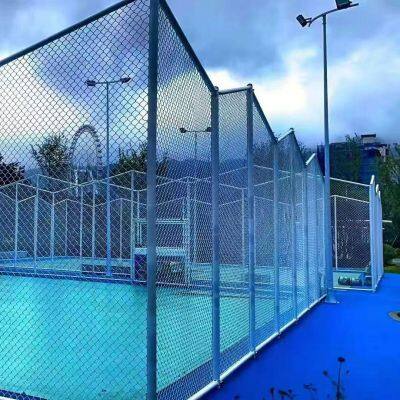-
 Liu
Hi there! Welcome to my shop. Let me know if you have any questions.
Liu
Hi there! Welcome to my shop. Let me know if you have any questions.
Your message has exceeded the limit.

Different Types of Fences for Yards: Exploring Fence Styles, Costs, and Options
2025-10-10 11:08:29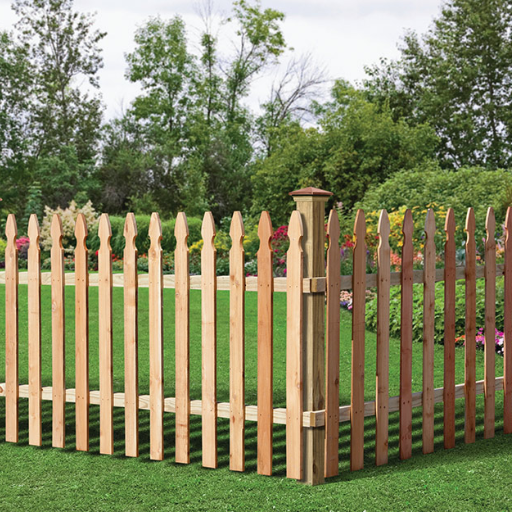
Fences not only follow but also enhance the beauty of the yard while making it safer, more secluded and nicer at the same time. The right fence can completely change your garden if you are looking for a safe haven for your loved ones, enhancing the curb appeal of your house or making the borders of your property clear. However, it is a quite challenging thing to do and feels a bit daunting with so many different types and variations, costs, and materials to choose from. You will get help and guidance from this comprehensive guide that covers backyard fence ideas, styles that are in demand, price issues, and necessary details that allow you to take the right decision. Whether you prefer the classic charm of a wooden fence, the strength of a vinyl one, or the simple look of metal, there is always a choice available that suits your requirements and budget. Find more info now.
Introduction to Yard Fences
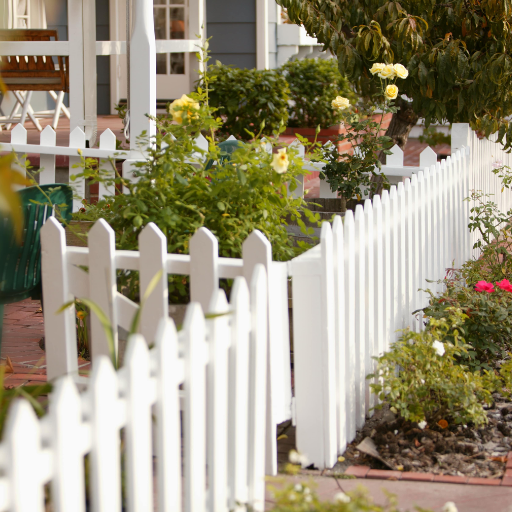
Your garden can benefit immensely from the installation of a fence as it would be both a practical and an aesthetic addition. The privacy it can provide is one of the main reasons for the fence to be put up, while also the security of your home would be affected positively and the boundaries of your property defined. Besides these functions, the outdoor space would be more appealing thereby the total value of the house might go up. Different types of fences are available and the choice of one will depend on your needs, the style of your house, and your budget.
Importance of Choosing the Right Fence
The importance of proper fence selection cannot be overstated as it will satisfy your needs in both aspects, function and style, at the same time. A fence that has been properly selected will be a major contributor to the security, privacy, and attractiveness of your estate. Below are the five significant reasons and factors that you should consider when selecting a fence:
Privacy
A fence installation can completely change the outdoors and create a place where you can relax without worrying about being seen. For instance, high wooden or vinyl fences serve as perfect barriers for privacy in town or suburb areas.
Security
A well-installed fence can signal to intruders that they are not welcome, keep your family secured, and restrict the area where your pets or kids can roam around. Research indicates that properties surrounded by fences are less prone to intruders.
Aesthetic Appeal
Fences not only protect but also beautify the area around your house by matching up with the existing architectural style of your home and using the right materials. The wrought iron or decorative aluminum fencing options, for instance, can provide elegance, while the modern horizontal fencing can lend a sleek, comfy look.
Durability and Maintenance
The longevity of a fence and the amount of maintenance that it needs should be prominent factors in your considerations. To illustrate, a vinyl fence can last between 20–30 years with little care whereas a wooden fence may need continuous maintenance in the form of repairs and treatments to keep it from rotting or getting damaged.
Cost-Effectiveness
Your financial plan is an important factor in the selection process. Even though chain-link fences are economical and practical, materials like wood or composite may cost more but provide better aesthetics and greater worth over time.
After going through these aspects, you will be able to select a fence that matches your wishes and guarantees your contentment for a long time.
Overview of Different Types of Fences
When it comes to fences, one must first comprehend the various types and their respective characteristics before making a decision. So, here’s a thorough description of the most popular types of fences together with recent information to guide your choice:
Wood Fences
A wood fence is always a nice choice regardless of the season, plus it comes in a unlimited range of designs. It can be made into different shapes and styles like picket, split rail, or privacy fences, which can be adjusted to fit different requirements, and so on. The recent statistics show that wood fences cost about $15 to $45 per linear foot on average depending on the wood type like pine, cedar, or redwood. Wood fence needs periodic maintenance like staining or sealing, but its natural appearance and versatility make it the most common option.
Vinyl Fences
Vinyl fences are very durable and require very low maintenance, so they are the most popular among all the fencing types. They do not rot, get infested by pests, or fade, which makes them a very durable option. The costs usually range from $20 to $50 per linear foot, putting them in a more expensive category than wood at first, but the minimal upkeep can save money in the long term. The types of vinyl fences available are from traditional white picket fences to sturdy privacy panels.
Chain-Link Fences
Such fences are always associated with their function and low prices. Security and utility fencing are its major use for chain-link fences which cost as low as $10 to $20 per linear foot. They may not look as great as wood or vinyl, but they still last a long time with a little maintenance. New technologies for chain-link fences include coated ones that provide better rust protection and a more refined appearance.
Composite Fences
Composite fences consist of a combination of wood and plastics, thus they give the best of both worlds—the aesthetics of wood and the endurance of synthetic materials. They can withstand almost anything, from the elements to pest infestations, and still only require very little maintenance. Composite fence prices start from $25 and go up to $60 per linear foot. Although the initial cost is high, their long life and environmental friendliness make them a great option for homeowners who want to be eco-friendly.
Metal Fences (Wrought Iron, Aluminum, Steel)
When it comes to metal fences, they always stand for strength, security, and ornamentation. Wrought iron fences, for instance, provide both elegance and secure boundaries but do let the rust take its toll, hence periodic maintenance is indispensable. On the contrary, aluminum and steel fences are lightweight and are generally coated with powder which serves as a weather resistance. Aluminum fencing goes for $20 to $50 per linear foot, whereas wrought iron can be anywhere between $30 and $70 per linear foot, depending on the intricacy and the grade of the material.
Bamboo Fences
Bamboo fences have emerged as a leading choice among the nature-friendly landscapers, thanks to their being eco-friendly, lightweight and unique in appearance. Their being spectacular especially in tropical or Zen-style gardens is an added plus. The vinyl, tropical-inspired look comes at a price of $10-$30 per linear foot which is quite moderate but in humid climates, they might be a little more demanding than the rest and hence, the need for the treatment.
Every fence type has its pros and cons in terms of style, maintenance, and budget, but by combining all those factors you can easily come up with a fence type that fits your specific needs. Moreover, analyzing the latest trends and cost estimates even more ensures you make a well-informed decision that brings your property’s functionality and aesthetic appeal to the next level.
Factors to Consider When Selecting a Fence
Purpose of the Fence
The first question you need to answer is why you are fencing off the area. Is it mainly for security, privacy, children or pets safety, or just for decoration? Knowing the purpose will direct your choice of materials, design, and height.
Material Options and Durability
All the materials you can use such as wood, vinyl, aluminum, and chain-link vary in their durability, maintenance needs, and costs. For example, wood gives a traditional look but needs regular maintenance, on the other hand, vinyl is maintenance-free and can withstand harsh weather.
Local Climate and Weather Conditions
The weather can greatly influence your fence's life expectancy. For instance, moisture-rich areas can decay wood fast, while hurricane-prone areas might need the stronger wrought iron or steel barriers.
Neighbor and HOA Considerations
Find out about local rules, HOA regulations, and property line agreements. Fence height, design, and location might be restricted in some places.
Budget and Long-Term Costs
Consider not only the cost of installing the fence but also the amount you will spend on maintaining it until the end of its life. For example, fences made of vinyl and metals will cost more initially, but they usually require less maintenance during their lifetime than wooden fences.
Through a thorough analysis of these elements, you can arrive at a decision that aligns with your values and ensures the fence will serve its purpose efficiently for a long time.
Popular Types of Fences for Yards
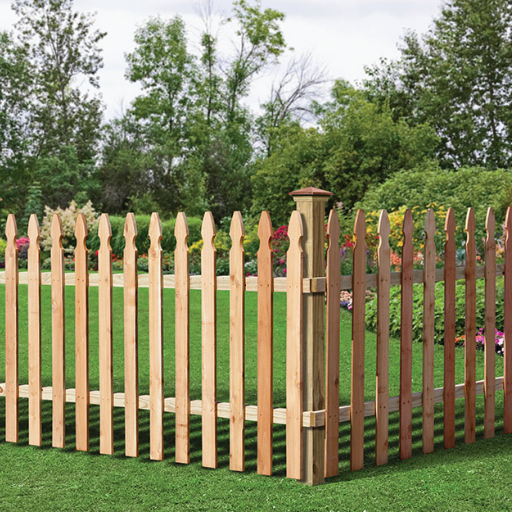
Fence Type | Key Features | Best For |
|---|---|---|
Wood Fence | Versatile, aesthetic, customizable | Privacy, traditional look |
Vinyl Fence | Low-maintenance, durable, weather-resistant | Privacy, modern style |
Chain Link Fence | Affordable, durable, low-maintenance | Security, pet containment |
Wrought Iron Fence | Elegant, sturdy, long-lasting | Security, decorative purposes |
Composite Fence | Eco-friendly, durable, low-maintenance | Privacy, modern aesthetics |
Picket Fence | Classic design, customizable | Front yards, gardens |
Split Rail Fence | Rustic, budget-friendly, minimal maintenance | Large properties, rural areas |
Lattice Fence | Decorative, supports climbing plants | Gardens, patios |
Metal Panel Fence | Sleek, modern, customizable | Contemporary designs |
Masonry Fence | Durable, upscale, sound barrier | Privacy, high-end properties |
Wood Fences
Wood fences are a traditional option often selected by homeowners because of their many good qualities that include being natural, aesthetic, and economical. They can be made in different styles, heights, and designs to meet various needs, whether for privacy, marking property lines, or simply making the front yard look nice. The most common types of wood used for fencing are cedar, redwood, and pine, but each type has its own particular advantages.
For example, cedar wood is naturally resistant to decay and insects, making it a very suitable choice for outdoor use due to its long-lasting quality. Redwood is another top-notch choice due to its durability and beautiful color, and on the other hand, pressure-treated pine is a low-cost option and at the same time it can resist termites and rotting.
Google Search trends show that wooden fences are still among the most favored fencing options in the United States. The researchers claim that the average cost of installing a wood fence ranges from $1,800 to $4,000, with the type, length, and height of the wood fence being the factors that directly affect the final price. Maintenance is an important factor to think about because wood needs regular staining or sealing to be weather-resistant; thus, it is a bit costly. Nevertheless, when properly maintained, wood fences can last as long as 20 years, thus, they are a good balance of cost and longevity.
Moreover, wood fences, when sourced from sustainable forestry practices, are considered to be a green option. The rustic charm and timeless appeal these fences bring to the outdoor spaces are the reasons why many homeowners still prefer them during the selection process, hence, they are the most desired choice for both modern and traditional houses.
Vinyl Fences
Vinyl fences are at the top of the list of the most attractive options for homeowners seeking a fence that requires minimal maintenance and lasts indefinitely. Vinyl fences are made from polyvinyl chloride (PVC), which makes them resistant to moisture, insects, and rotting; thus, they are great even for those areas with very harsh and unpredictable weather. On the contrary, wood fences need regular painting, staining, and sealing which increases the costs significantly and requires a lot of effort and time on the part of the owner.
One most noticeable plus point of vinyl fencing is its lifetime. As per present statistics, vinyl fences of the best quality can last for up to three decades and over twenty years even with minimal care and attention. At the same time, they are available in different designs and colors that include the one resembling the real wood and thus providing the customer with more choices to suit his/her preference and even the place.
Vinyl fences also turn out to be eco-friendly fences in the long run. The scenario of waste in the industry has forced many producers to start making recyclable vinyl products and the lack of chemical treatment cuts down on the environmental impact. On the other hand, the initial costs of vinyl fencing are usually higher than those of wood, but its low maintenance costs and long life make it a smart economic choice over time.
Besides being very durable, vinyl fencing is also the strongest among the materials used to build fences. They can withstand powerful winds, hefty rains, and both very high and low temperatures without undergoing any warping or degrading processes. Such a great durability, along with a wide variety of styles and colors, makes vinyl fences the top and most preferred choice for the modern homeowner who intends to invest both in the property’s aesthetics and security.
Wrought Iron Fences
Wrought iron fences are a classic option that elegantly unites and strength and security perfectly. These fences are best known for their beautiful designs and can significantly enhance the building's aesthetics while also providing strong protection. Wrought iron is powerful, and it will survive the most brutal weather like pouring rain, intense sun, and gale without getting spoiled.
New wrought iron fences are frequently treated with protective coats to prevent rusting or corrosion, thus giving them a longer lifespan with minimal maintenance. Their strength is highlighted by their ability to endure for years, with some fences living on for more than half a century if taken care of properly.
Moreover, wrought iron fences provide a great variety of design options. Homeowners can transition from medium to effortless styles and choose the one that best aligns with their buildings and gardens. As per the market report, wrought iron fencing continues to be a popular option, particularly in cities where safety and beauty are the major concerns. The initial cost of $24-$34 per linear foot is not the least; however, the durability and timeless appearance often make the investment worthwhile, even for less affluent property owners.
Chain Link Fences
Chain link fences are the most recognized type of fence in the industry, offering a combination of low price, long life, and very little maintenance, making them a preferred choice for both domestic and commercial needs. The fencing consists of steel wires that are galvanized to prevent rust and then woven into a mesh with diamond shapes. This design ensures the fence does not block the view while still providing a strong barrier to prevent unauthorized entry into the property.
As per the latest statistics, the typical rate for the installation of chain link fences is between $8 and $18 per linear foot, taking into consideration the height, quality of the material, and, eventually, if the steel is coated with vinyl for the purpose of giving it a better weather resistance that comes with longer life. The customary heights of the fences vary from 4 to 6 feet but secured custom options are available.
Chain link fences have proven to be the best choice for playgrounds, sports fields, and industrial sites because of their low cost and adaptability. Modern manufacturing techniques have allowed homeowners to choose colored vinyl-coated wires in shades of black or green, which blend more unobtrusively with the surrounding landscape. In short, chain link fences deliver a practical, functional, and economical solution for a variety of fencing needs.
Picket Fences
The pictorial representation and classic American houses have always been illustrated by picket fences, which also bring a somewhat sophisticated and lively character to the buildings. These fences, usually made of wood or vinyl, consist of vertical posts attached to horizontal rails spaced at equal distances. The main function of this style is to provide aesthetic appeal, allowing the owners to mark their areas without creating a blind spot or blocking the breeze.
A recent statistic shows that vinyl picket fences have gained so much favor with the owners that they are considered to be the leaders in durability and low-maintenance. The vinyl fence does not require the treatment that wood needs, such as constant painting or staining, and also no decaying or insect damage can stop the vinyl fence from lasting. Google Trends reports a continuous increase in the number of people searching for “vinyl picket fences,” which is proof of their present-day acceptance among buyers. To add, vinyl fences are often available in several colors and styles, allowing homeowners to choose a fence that matches their personality while still fitting the classic picket fence aesthetics.
On the other hand, wooden picket fences have been offered. Although they need more upkeep, customers who love their natural, rustic flavor still choose wood. The woods usually employed for making the fences are pressure-treated wood or cedar since they come with inherent character features of decay and pest resistance. The newer treatments and sealants have also been responsible for the extended life of wooden fences, which are now purchased by many as they have become practically justifiable.
Research from the picket fence industry has revealed that the cost of wooden picket fences is around $10 to $20 per linear foot, whereas the vinyl ones are priced from $20 to $40. Thus, the wooden one is the more affordable option for budget owners, while the vinyl one offers a very long life.
With a cute and old-fashioned aura or a trendy, low-maintenance solution in mind, picket fences remain a notable choice that is both versatile and decorative.
Composite Fences
Composite fences are a great choice for those who want to have it all: durability, good looks, and eco-friendliness. Besides, their wood-like appearance is so natural that one cannot even think of the wood-related problems, like rotting, warping, or regular maintenance, anyway.
The first thing that comes to mind when discussing the pros of composite fences is their sturdiness. The average life span for such fences is about 25 to 30 years, which is a huge difference compared to wood. Another thing to mention is that composite fences require almost no maintenance; they are pest, mold, and mildew free, do not need to be colored or dubber, and so on. This kind of fence really suits homeowners who want their property surrounded by an attractive and durable fence but are not willing to compromise on the effort they put into it.
Different brands and styles will lead to different prices for composite fencing. At the lower end of the market, we have places where you can get composite fences for around $25 per linear foot, while at the higher end you can find possibilities that reach $45 per linear foot. Appearances can be deceiving, though, as they are sometimes considered more expensive to the present cost of wood or even vinyl options. However, due to the reduced maintenance and the prolonged lifespan, they very often end up being the most economical choice. For instance, the main brands, Trex and Fiberon, offer warranties so long that the value of these fences over time is completely guaranteed.
Besides, composite fences also contribute to the environmentally friendly side of the industry as they consist of recycled and repurposed materials. This, in turn, gives them the rank of an eco-friendly fencing option which can actually be used by the very demanding, environmentally conscious homeowners. Available in a wide array of colors and finishes, composite fences can help you achieve the desired look without sacrificing performance.
In a nutshell, composite fences are the smart choice for the ones who want a strong, easy-to-care-for, and good-looking fence that does not harm the environment at the same time.
Comparing Fence Materials
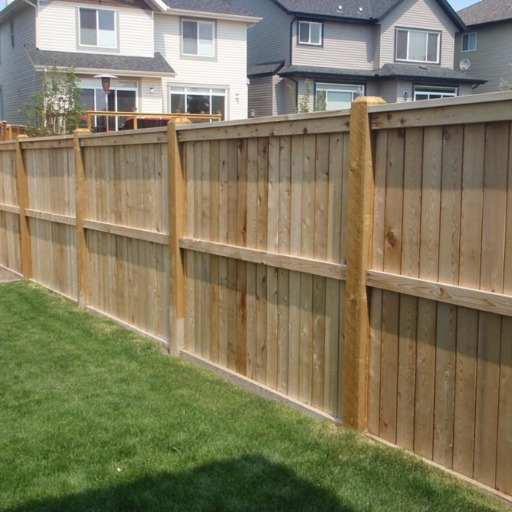
The evaluation of different fencing materials requires taking into account, first and foremost, their durability, cost, maintenance requirements, environmental impact, and aesthetic appeal. Below you will find a thorough comparison of some of the most popular fencing materials:
1. Wood Fences
Durability: Wood fences usually have a lifespan of 15 to 20 years if kept well, but they are susceptible to decay, warping, and insect infestation.
Cost: The price generally varies from $15 to $30 per linear foot.
Maintenance: Continuous staining, sealing, or painting is necessary to keep the wood fence last longer and look good.
Environmental Impact: It can be green if it is taken from responsibly managed forests but possibly treated with chemicals.
Aesthetic Appeal: Timeless and classic charm that fits different architectural styles.
2. Vinyl Fences
Durability: Very strong, and with a life span of twenty to thirty years. Weather, rot, and termites do not harm it.
Cost: Costs around $25 to $40 per linear foot.
Maintenance: A clean-up of occasional soap and water is all that is required for maintenance.
Environmental Impact: Not very eco-friendly because of the plastic content and non-biodegradability but it is possible to recycle many vinyls.
Aesthetic Appeal: Modern and sleek; a multitude of colors and designs to choose from.
3. Aluminum Fences
Durability: 20-30 years as a minimum and resistance to rust and corrosion are two positive aspects.
Cost: $20-$40 is what you will have to pay depending on quality and style, that is the usual price range.
Maintenance: Maintenance is rare, the only exception being the occasional washing to remove dirt or debris.
Environmental Impact: Made from recycled materials and generally using recycled aluminum, therefore it is environmentally friendly.
Aesthetic Appeal: It brings about a classic or ornamental appearance like wrought-iron.
4. Composite Fences
Durability: Very tough and lasts over 25 years. Weathering, rotting, and pest attacks are no concerns for it.
Cost: $25-$50 per linear foot.
Maintenance: Almost no maintenance is required since it does not have to be painted or stained.
Environmental Impact: Since the product is made from recycled and repurposed materials, it is an eco-conscious choice.
Aesthetic Appeal: It looks like real wood, but it is available in different colors and finishes for customization.
5. Chain-Link Fences
Durability: 15-20 years when taken care of properly. Will slowly rust without protection.
Cost: The price is around $10-$20 per linear foot.
Maintenance: It is low maintenance, but once in a while, rust treatment may be needed.
Environmental Impact: Not biodegradable, but they are often recyclable.
Aesthetic Appeal: Simple and functional; not good when it comes to privacy but effective in property security.
Key Takeaways
Budget-Friendly Options: Chain-link fences and standard wood fences are cheap and practical solutions for getting your property secured.
Durability and Low Maintenance: The winner is Composite and vinyl for their long life, and they require the least amount of care.
Eco-Friendliness: Composite and aluminum fencing are environmentally friendly choices since they are made from recycled materials.
Aesthetics: Vinyl, composite, and aluminum fences are all great options if you want a modern and sleek look with plenty of customization options.
In light of the above, one should always consider cost, aesthetics, and environmental impact when selecting the appropriate fence for one’s home.
Wood vs. Vinyl Fences
Parameter | Wood Fence | Vinyl Fence |
|---|---|---|
Cost | Lower upfront cost | Higher upfront cost |
Durability | 15–30 years with maintenance | 20+ years, highly durable |
Maintenance | Regular staining/painting required | Minimal, occasional cleaning |
Aesthetics | Natural, customizable | Clean, modern, limited customization |
Weather Resistance | Prone to rot, warping | Resistant to rot, pests, and weather |
Repair | Easy to repair individual planks | Entire panels may need replacement |
Eco-Friendliness | Natural material, biodegradable | Made from PVC, less eco-friendly |
Installation | Heavier, more labor-intensive | Lightweight, easier to install |
Privacy Options | Customizable for privacy | Solid panels for complete privacy |
Long-Term Cost | Higher due to maintenance | Lower due to minimal upkeep |
Metal Fences: Wrought Iron vs. Aluminum
Parameter | Wrought Iron Fence | Aluminum Fence |
|---|---|---|
Cost | Higher upfront cost | More affordable upfront |
Durability | Extremely durable, lasts decades | Durable but lighter, may dent |
Maintenance | Requires regular rust prevention | Minimal, rust-resistant |
Aesthetics | Classic, intricate designs | Versatile, mimics wrought iron styles |
Weight | Heavy, adds security | Lightweight, easier to handle |
Security | High security, hard to breach | Moderate security, less robust |
Weather Resistance | Prone to rust without maintenance | Corrosion-resistant, ideal for all climates |
Installation | Labor-intensive, requires expertise | DIY-friendly, easier to install |
Customization | Highly customizable, intricate designs | Wide variety of styles and finishes |
Eco-Friendliness | Energy-intensive production | Recyclable, eco-friendly |
Composite vs. Traditional Fencing Materials
Parameter | Composite Fencing | Traditional Fencing |
|---|---|---|
Cost | Higher upfront cost | Lower initial cost |
Durability | Resistant to rot, insects, and weather | Prone to rot, warping, and pests |
Maintenance | Minimal, occasional cleaning | Regular staining, painting, or sealing |
Lifespan | 20–30 years or more | 10–20 years with maintenance |
Aesthetics | Uniform, modern, wood-like appearance | Natural, rustic, customizable |
Eco-Friendliness | Made from recycled materials | Renewable but may contribute to deforestation |
Installation | Lightweight, easy to install panels | Labor-intensive, requires expertise |
Weather Resistance | Withstands extreme conditions | Susceptible to weather damage |
Customization | Limited to manufacturer’s colors/styles | Paintable, stainable, highly customizable |
Long-Term Cost | Lower due to minimal upkeep | Higher due to frequent maintenance |
Costs Associated with Different Types of Fences
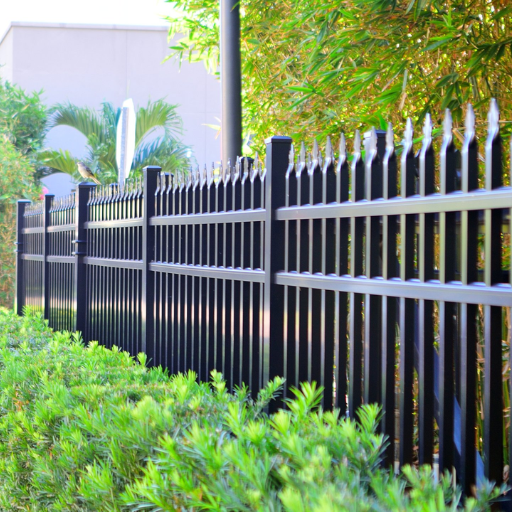
Fence Type | Cost per Linear Foot (Installed) | Key Notes |
|---|---|---|
Chain-Link | $6–$20 | Affordable, low-maintenance, basic security |
Wood (Pine, Cedar) | $10–$45 | Natural look, requires regular maintenance |
Vinyl | $15–$60 | Durable, low-maintenance, higher upfront cost |
Composite | $30–$60 | Eco-friendly, long-lasting, minimal upkeep |
Aluminum | $17–$90 | Lightweight, rust-resistant, modern style |
Wrought Iron | $25–$70+ | Elegant, durable, high maintenance |
Understanding Fence Installation Costs
In my opinion, it is very helpful to consider the installation costs of a fence in terms of materials, labor, and long-term maintenance. Fence materials, such as vinyl or composite, usually cost more at first; however, they require little or no upkeep and thus save money in the long run. Conversely, a wooden fence is cheaper to buy initially, but it will require frequent treating and repairs, which are maintenance costs that escalate over time. Labor costs also depend on the difficulty of the installation and whether or not the customer wants customization. Taking all these factors into account, I can select a solution that meets my budget and future maintenance preferences at the same time.
Maintenance Costs for Various Fence Types
When selecting a fence, it is crucial to evaluate the maintenance costs associated with the various materials before making a decision. The maintenance requirements and costs of the five most common types of fences are as follows:
Wooden fences
Average annual cost: $100–$200
Regular maintenance for wood fences includes varnishing, oiling, and replacing already rotten areas. The wood is susceptible to the elements and insects requiring constant maintenance.
Vinyl fences
Average annual cost: $20–$50
Vinyl is also low-maintenance requiring, at most, only infrequent washing with soap and water. The damage is very small, and the repair may involve replacing parts where the section is damaged.
Chain-link fences
Average annual cost: $10–$30
Maintenance is quite light, consisting mostly of rust prevention and tightening loose connections. Application of protective coatings can be a factor in extending the lifespan.
Aluminum fences
Average annual cost: $20–$40
Aluminum fences offer excellent durability and require minimal maintenance, which is mainly cleaning and checking for damage. Corrosion resistance is a factor that decreases the frequency of long-term upkeep.
Composite fences
Average annual cost: $50–$100
Composite fences are a mixture of wood and plastic that require even less maintenance than wood but more than vinyl. The greatest part of the care consists of occasional cleaning and assessing the structure's integrity for maintenance.
By having a clear understanding of these factors, the homeowners will be able to plan better not only for the initial investment but also for the continuous care that would be dictated by the choice of fencing.
Long-term Value of Different Fencing Options
When considering the long-term value of fencing, it is important to evaluate its durability, maintenance costs, lifespan, and overall performance. There are five fencing materials that are most commonly chosen and their long-term value is highlighted through the details given below:
Wood Fencing
Durability: 15-20 years with proper maintenance.
Maintenance Costs: High, requiring constant sealing, staining, or painting to prevent decay and warping.
Value Assessment: Wood fencing, although aesthetically pleasing, requires a lot of maintenance, leading to higher overall costs in the long run.
Vinyl Fencing
Durability: 20-30 years, highly resistant to wear from weather or insects.
Maintenance Costs: Low, as just the occasional washing with soap and water is required.
Value Assessment: A great investment for the long term if you are looking for a very low maintenance option that performs just like a high-end one in terms of longevity.
Chain Link Fencing
Durability: 15-25 years, depending on the process of galvanization and coating.
Maintenance Costs: Low, sometimes not at all, or maybe just the coating or repairing the damaged sections.
Value Assessment: Affordable and okay lifespan, suitable for those who want fencing that is functional and cheap.
Aluminum Fencing
Durability: 30+ years, highly resistant to rust and corrosion.
Maintenance Costs: Almost none, just cleaning once in a while.
Value Assessment: After all, the initial cost of aluminum is higher but it brings with it great durability and future savings on maintenance.
Composite Fencing
Durability: 25-35 years, having both strength and weather resistance.
Maintenance Costs: Moderate, occasionally needing cleaning and inspections.
Value Assessment: It is the perfect combination of beauty and strength giving the option of a long-lasting wood alternative with lesser maintenance needs.
Durability, maintenance, and longevity are key factors that help homeowners choose the right fencing materials to support their goals, ensuring a stunning and cost-efficient investment for the future.
Frequently Asked Questions (FAQ)
What are the different types of fences for yards?
You can definitely find many kinds of fences for yards which include privacy fences, chain-link fences, wooden fences, and so on. Each type possesses its own distinct advantages and you may select the one that caters to your requirement the most; it could be security, aesthetics, or even livestock containment.
What materials are commonly used for fence installation?
There is a whole range of materials that can be used to make fences, such as wood, vinyl, aluminum, and metal. Wooden fences have a natural look so they are the most common material used while vinyl and aluminum fences are synonymous with low maintenance and long life. Chain-link fences come into play when security is a priority because they are both cost-effective and trustworthy.
How do I choose the best fence type for my yard?
To choose the best fence type one has to think about their goals, like would they rather have a hidden fence or a security fence, or simply to keep pets in the yard or to enhance the curb appeal. Factors like the fence material, style, cost, and maintenance needs should also come into consideration. A wood privacy fence might be deemed an excellent choice for seclusion, while a chain-link fence will provide visibility along with security.
What are the costs associated with different fence types?
Fence costs will vary a lot depending upon the type of fence, materials used, and installation fees. On the whole, chain-link fences can be classed among the most economical choices while wooden and vinyl privacy fences can turn out to be expensive due to materials and labor. Always remember to include the possible extra costs, like for the fence posts and panels, in your budget.
What styles of fencing are popular in residential areas?
Picket fences, split rail fences, privacy fences, aluminum or vinyl panel fences are the most common styles in residential areas. Moreover, every style can positively impact the overall beauty of your yard while fulfilling different roles such as security, decoration, or pet containment.
What is a split rail fence and what is it used for?
A split rail fence is typically found in rural areas as farm fencing or used as an ornamental fence around residential yards. It is a wooden fence primarily consisting of horizontal rails connected to vertical posts. Split rail fences are the best for keeping animals in and are preferred for their natural look.
How do I install a privacy fence?
Installing a privacy fence is a multi-step process that involves layout planning, securing permits, and clearing the ground. You will need to measure the area, pick your fence material, and build the fence panels. It is critical that you make sure that each fence post is properly secured, in order to provide firmness.
What is the benefit of using electric fencing for livestock?
Electric fencing installation is an mere livestock containment solution; animals are discouraged from escaping and intrusions are kept at bay. The fence allows a low voltage shock that gives the animals a sensation and thus they won't make an attempt to get through the barrier. Low maintenance is often one of the advantages of this type of fencing and it can also be customized according to the needs of your farm or yard.
What is a composite privacy fence?
A composite privacy fence is nothing but a combination of wood strands and repurposed materials and the end product has a wood-like appearance without the hassle of wood's maintenance. Such fences are tough, storm-resistant, and even give perfect seclusion; besides being eco-friendly. They are available in different styles and colors, and hence the variety suits a lot of yards.
Tags: different types of fences for yards
